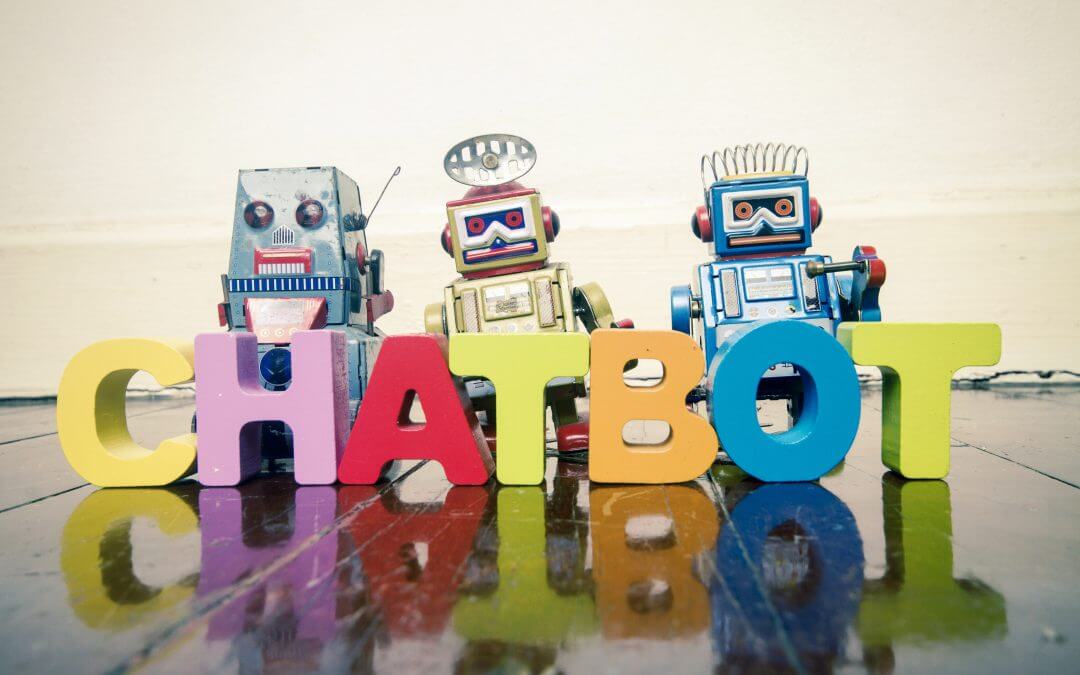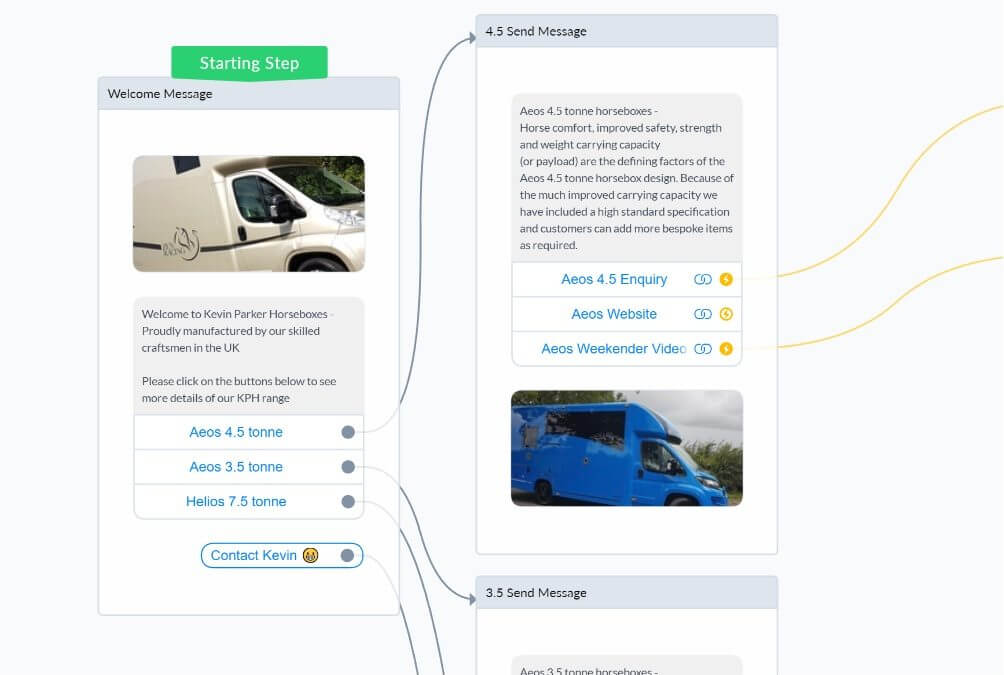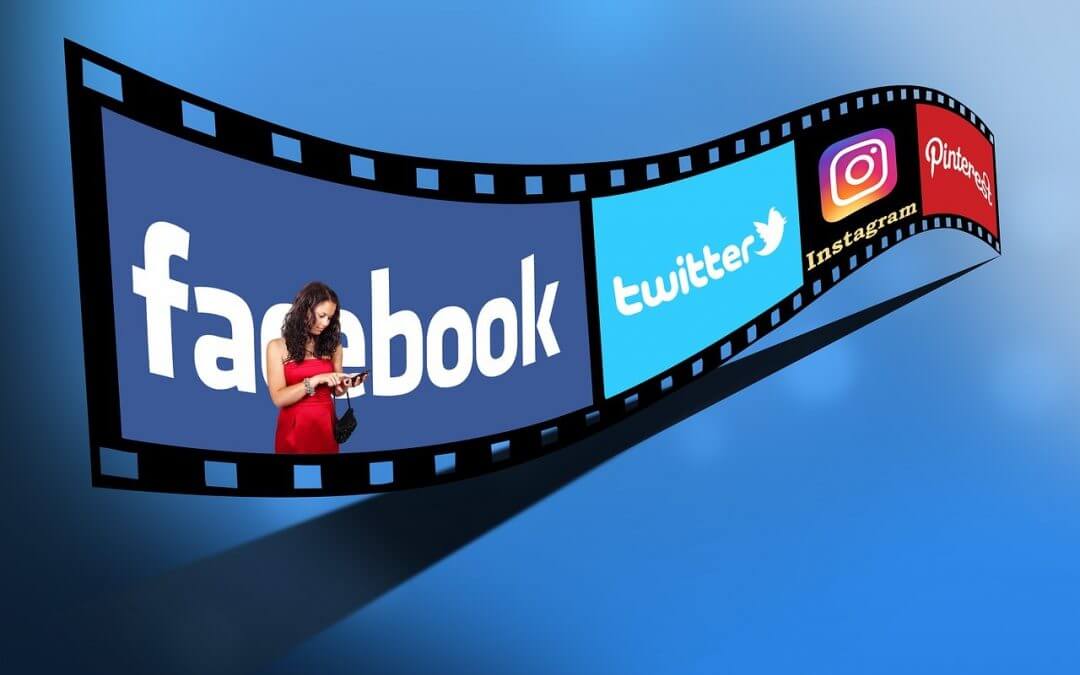Chatbots are on the rise. In recent years, technological advancements and changes in consumer habits have seen interactive communication tools grow rapidly. Facebook Messenger alone has over 300,000 active chatbots.
On the other side of the digital landscape, email marketing remains a significant presence. This communication monolith has been around since the internet began, and is predicted to have over 3.8 billion users by the start of next year. It’s by far the best performing marketing channel with 40 times more customer acquisitions than Facebook and Twitter combined.
Each one of these tools has a role to play in a marketing campaign, but how should you use them to provide support? That’s what we’re going to determine here, so let’s get started.
Talking vs. telling
Chatbots bring something to digital marketing that businesses have never really had before — an easy, affordable way to initiate dialogue with customers. Customer service centers are expensive to run and manage, and social media requires a significant time investment. Both rely on human judgment, which can sometimes go horribly wrong.
This is where chatbots shine. Improvements in artificial intelligence (AI) and messenger applications create infallible, almost human-like interactions. Users who like a company’s Facebook page, for example, may be prompted with a message that promotes a special offer, allows them to book/purchase through Messenger, ask pressing questions, or solve problems. They can do everything right there and then, without having to leave the page. This is valuable for both your marketing and your customer support.
Emails, on the other hand, are very much about telling. With no dialogue, you’re simply setting out what you think the reader should know and believe — but that process of telling is more in-depth. If you put all the content from an email into a Messenger conversation, it would be illegible. With an email you can cover multiple topics and provide several links, each of which provides a fresh opportunity for the reader to visit your site.
Millennials vs. generation X
You may be surprised to learn that the use of chatbots is massively dependent on age. Around 40% of millennials say they interact with chatbots every day. Conversely, 55% of those over 56 won’t even use mobile devices to access emails. Understanding this difference in online behavior is crucial when deciding on channels for marketing and support.
The older you are, the longer you have lived with email. It’s been a primary method of digital communication for decades and, while not everyone has a Facebook profile or is active on WhatsApp, almost everyone has an email address. Consider carefully if a chatbot is worth the investment considering your target audience.
If you’re marketing cruises to over 50s, a chatbot may not be the best use of your money. Instead, you might want to invest in a social media analytics tool, such as Sprout Social. Using this software lets you extract a deep pool of data on your customers, making it much easier to target your social media marketing to them.
If millennials are your target, however, you’d be investing a medium that they use on a daily basis. It’s thought that they spend around 2–4 hours a day on social media platforms, such as Facebook, Twitter and Instagram. The average teenager spends almost nine hours on social media every day. Nine hours.
Because of this, they want to be interacting with your brand. In fact, 53% of Facebook users are more likely to buy from brands they can talk to. If this is your audience, a chatbot could be a real benefit to your audience engagement.
Opens vs. clicks
The stats are very interesting when comparing chatbots and emails. Messages from chatbots — usually prompted by users messaging them first or liking company pages — have a 70–80% open rate, and a click rate of 15–60%. If you’re familiar with email marketing, these statistics should shock you.
If you’re unfamiliar with email marketing, here’s why it’s so shocking: if you average out email open rates across industries, you get a rate below 25%, with an average click-through rate that barely passes 4%. This is a vast difference. It certainly helps that there’s so much chatbot data available, which will inevitably continue to improve the typical chatbot conversation until it’s almost indistinguishable from that of a real support conversation.
Spam vs. user-initiated contact
As noted, the difference between the open rates of these mediums is incredible. One reason for this is the cause of the contact. Messages from chatbots normally result from direct user actions (sending messages, commenting on pages, installing specific apps, etc.), which ensures that chatbot users are engaged and attentive.
On the flipside, many emails are unsolicited and routinely distributed — have you ever received emails clearly scheduled for the same time every day? It’s extremely common, despite how broadly ineffective it is. We’re accustomed to receiving spam email. It’s endemic. As a result, we’ve all become somewhat disenfranchised with promotional emails.
The key to good email results is to find a way to ensure that user-requested materials don’t appear spammy and that unrequested emails do enough to justify themselves. There are three keys to this:
- Understand industry context. Different fields have different performance averages. Areas such as ‘marketing and advertising’, ‘beauty and personal care’ and ‘computers and electronics’ have very low engagement — if you’re in one of those fields, don’t compare your emails to those from other fields.
- Monitor performance metrics. You need to know how your emails are performing so you can improve them. Email marketing software from Moosend will allow you to review a range of metrics such as bounces, link clicks, unique opens, forwarded emails, unsubscribed recipients, unopened emails, and emails marked as spam.
- Accommodate rules and regulations. Regardless of where you are in the world, GDPR is something you need to be aware of if you’re going to be sending marketing emails. In general, people are expecting much higher standards of privacy today. Mess up, and you’ll lose subscribers in droves.
Dialogue vs. sharing
One key difference between emails and chatbots is the ability to share content. With chatbots, users benefit from artificial dialogue aiming to achieve helpful actions — booking tickets, completing purchases, solving problems, etc. Once that dialogue is completed, there is no reason to continue it, and nothing in particular to pass on to others. That might be why retention rates are as low as 4%. This is good for the user, but not as good for brand growth.
Emails, however, can be viewed as digital brochures. They should be nicely built, sent with visually-appealing content, digestible copy, and compelling CTAs, because a great email can easily be shared. You should have social sharing buttons, but even if you don’t, someone can easily forward your email to someone they know. This aspect of emails makes them great for showing off terrific design work.
The winner: co-operation
When we talk about pitting chatbots against emails, it’s only about figuring out when each one of them is a good fit, because in general they should be used together. There’s no good reason to overlook either approach to marketing, as their purposes are fundamentally different and thus entirely compatible.
Chatbots can be used for direct dialogue with your customers. Whether they’re looking for instant support or reacting to offer prompts, your customers end up talking to your chat because they want to. They’re completely ready for conversation, and significantly more likely to buy afterwards. Consider implementing chatbots through your social channels to handle customer service or initiate contact following page likes or comments.
Email, on the other hand, is a tried, tested, and ubiquitous medium. Yes, there are pitfalls and perils, but they’re all well documented and easy to avoid. Rather than using them for hard sells, use them to provide interesting information that’s well-considered, shareable, and easy to digest. You can also use emails to enhance the customer experience — let them know when they’ve successfully purchased a product, when it’s on its way, when it’s there.
Use these two together and they really shine. Once a user has bought a product through your chatbot, why not follow up with an email asking what they thought of it, or if they’d consider talking about it through social media? And it makes all the sense in the world to talk up the value of your chatbot support system in your promotional emails.
A modern marketing campaign needs everything working in combination, and these two are the stars.
Article credit – this first appeared on Chatbotslife.com which is a good source of information on everything to do with Chatbots





0 Comments